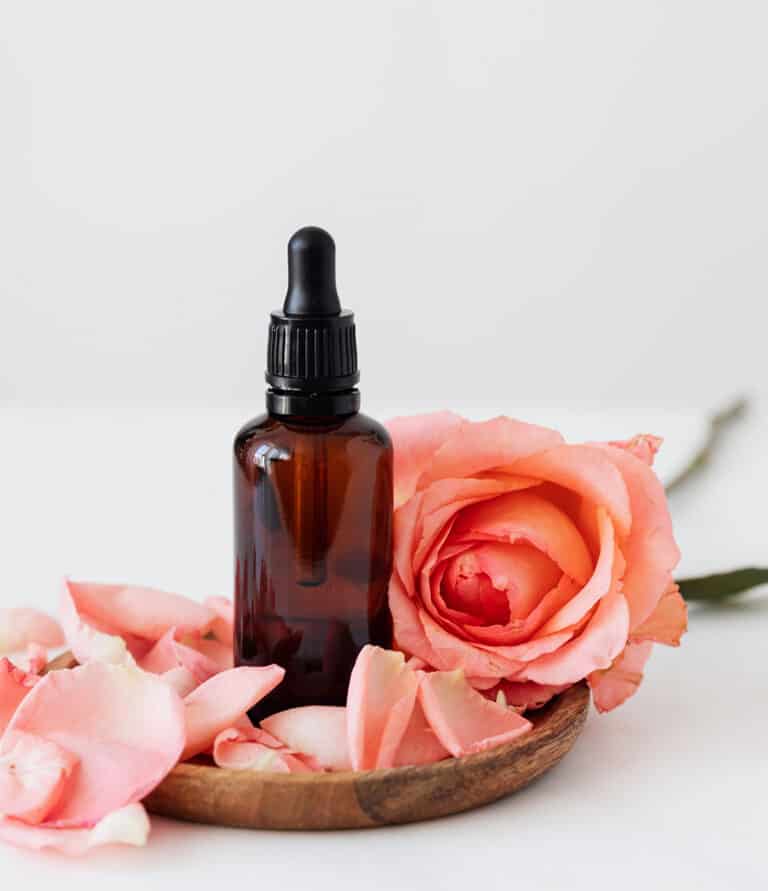

Atrophic vaginitis or vaginal atrophy is a genitourinary syndrome of menopause that affects postmenopausal and menopausal women. It’s a health condition where the vaginal lining gets thinner and drier as a result of decreased esterogenization of vaginal tissues. This results in burning, itching, intercourse discomfort, urinary tract problems, and urinary incontinence.
Vaginal refers to a woman’s vagina while atrophy means “diminution”. This term has recently been replaced with a newer term called genitourinary syndrome of menopause. It describes the vaginal as well as the urinary problems such as urinary tract infection, and frequent urination associated with this condition due to low estrogen levels. It’s a common symptom faced by postmenopausal women.
However, it can occur anytime in the entire life cycle of a woman due to the sudden drastic drop in estrogen levels. Keep on reading to discover more about vaginal atrophy and the possible solutions to this condition.
Table of Contents
ToggleWhat is Postmenopausal Atrophic Vaginitis?
Postmenopausal vaginal atrophy occurs in women under the conditions of hyperestrogenism. Menopause is the primary cause of hyperestrogenism. Nevertheless, the other causes behind the hypoestrogenic state include breast cancer treatments, lactation, medications, etc. Although, in other cases, the condition may be resolved once the estrogen levels are brought back to balance.
Vulvovaginal atrophy, urogenital atrophy, and vaginal atrophy are the other terms used for describing the symptoms faced by women as a result of decreased estrogenization. During the premenopausal stage, the estradiol levels range between 10 to 800pg/ml while in the postmenopausal stage, this level drops to 30pg/ml, sometimes even less. In addition, the estrogen level drops by 85% during this stage.
Generally, the vaginal epithelium remains thick with rugae and moist until menopause. As estrogen production is reduced during menopause, the epithelial cells become thinner which leads to less exfoliation of the vaginal cells. The exfoliation of cells releases glycogen in the area which is hydrolyzed to the glucose.
Glucose is further broken down into lactic acid by its interaction with lactobacillus, a vaginal commensal organism. This cascade helps to maintain the natural acid balance in the vaginal canal. The less exfoliation of the vaginal cells reduces glucose production. As a result, the lactic acid production through this action gets hampered and the vaginal pH balance gets disrupted.
This results in the overgrowth of unnecessary bacteria and the loss of lactobacilli. This can cause more urinary tract infections, vaginal infections, and inflammation. According to the North American Menopause Society, almost 40% of women experience the symptoms of atrophic vaginitis. A decline in vaginal estrogen also reduces the blood flow in the vagina and reduces vaginal lubrication.
How Does Vaginal Systemic Absorption Work?
The systemic absorption of vaginal estrogens occurs to a limited extent, but treatment safety measures need to be taken in order to avoid the risk factors. Several studies have been conducted comparing the different doses of estradiol vaginal or a vaginal estrogen tablet to understand whether systemic absorption occurs or not. This helps to avoid increasing the hormones in other areas.
One study showed that estradiol level was increased from 3 pg/mL to 17 pg/mL within a period of 7 days. Patients were treated both with vaginal estrogen cream, and estradiol vaginal tablets. Another study showed that the plasma estradiol concentration was diminished by treating the patients with vaginal estradiol.
There are shreds of evidence that show that the level of estrogen is increased over time if patients use vaginal estrogen products consistently. Although the estrogen is applied as a vaginal estrogen ring, tablet, or cream, the serum estrogen level remains below the premenopausal levels. This may be a concern to women who have a history of hormonally sensitive cancers.
What is Oral Estrogen?
Oral estrogen is used to treat menopausal symptoms such as hot flashes, vaginal dryness, night sweat, etc. However, using this medication for a prolonged time may heighten the risk of estrogen-related cancers. Therefore, women who have a history of breast cancer or any other type of cancer aren’t prescribed to use oral estrogen.
If one’s health history doesn’t include the cancer ailment, then doctors may prescribe progesterone along with the oral estrogen tablet to increase the estrogen levels in the system. While the risk of cancer for women taking oral estrogen is minimal, people shouldn’t delay visiting the doctor if the postmenopausal bleeding continues. This can be one of the early signs of endometrial cancer.
It’s important to take the medication regularly to yield the benefits. Usually, there is a cyclic schedule and a continuous schedule. The dosage depends on the estrogen levels present in the system. Sometimes low-dose vaginal estrogen may restore minimal imbalances. Nevertheless, it’s recommended not to increase the dosage without further medical advice.
Vaginal Estrogen Therapy Treatment Options
The symptoms of genitourinary syndrome of menopause can be reduced and vaginal health can be improved by treating the underlying cause. There are several treatment options available to relieve symptoms.
The vaginal estrogen therapy treatment options include:
Vaginal Moisturizers
Due to low estrogen levels, the vaginal tissue loses its moisture in the area. As a result, vaginal dryness becomes one of the most common menopausal symptoms. However, vaginal moisturizers such as Replens, Liquibeads, Sliquid, and others can help to restore moisture in the vaginal area. This can be applied every few days to notice the effect.
Water-Based Lubricants
Sex stimulates blood flow in the vagina and boosts natural moisture. Sexual intercourse doesn’t have an impact on estrogen levels but it keeps the reproductive organs healthier by improving the blood flow. Nevertheless, women with vaginal atrophy symptoms face discomfort during their sexual activity. A few water-based lubricants can ease these uncomfortable symptoms.
It’s important to choose products that exclude glycerin or other warming properties as it may lead to vulvar itching. In addition, women should avoid petroleum-based products as they can break down latex condoms on contact.
Topical Estrogen
Topical estrogen can’t treat systemic menopausal symptoms like hot flashes. Still, it may relieve symptoms directly without increasing the estrogen level in the overall bloodstream. Since it limits one’s exposure to estrogen, there are the least chances of developing endometrial cancer. However, immediate attention from the doctors is required in case there is unusual vaginal bleeding.
Topical vaginal estrogen can be taken in several forms such as vaginal estrogen rings, estrogen suppositories, estrogen creams, and estrogen tablets. The suppositories are inserted into the vaginal canal for two weeks while others are applied directly into the vagina. The dosage and frequency of application both depend on the severity of the vaginal atrophy.
Systemic Estrogen Therapy
Systemic estrogen therapy or hormone therapy is a type of hormone replacement therapy. Ideally, hormone therapy is prescribed to postmenopausal women who are facing severe symptoms such as vaginal dryness, hot flashes, night sweats, etc. Both oral and topical estrogen is suggested to treat these symptoms.
Still, this hormone replacement therapy can be used to improve vaginal health, vulvovaginal atrophy, and increase vaginal secretions. In addition, there is a local low-dose estrogen therapy available to treat vaginal symptoms only. Women who have a history of breast cancer or hormonally sensitive cancer shouldn’t take hormone therapy as it may increase the risk of developing further complications.
Ospemifene & Prasterone
Ospemifene or Osphena is a non-hormonal treatment option to treat moderate to severe genitourinary syndrome of menopause. The prasterone or Intrarosa is a type of vaginal insert that delivers the hormone directly to the vagina to relieve the painful symptoms during sexual intercourse. This medication is used for severe and moderate vaginal atrophy.
Still, women with a history of breast cancer treatment aren’t allowed to take these medications as it may increase the risk of developing more complications.
Vaginal Dilators
Vaginal dilators are the most preferred option to treat vaginal atrophy, especially in women with a breast cancer treatment history. This is a non-hormonal treatment that can stretch the muscles in the vaginal area and stimulate the production of vaginal fluids. This helps to prevent the vaginal area from narrowing down and reduces the pain during sexual intercourse.
Besides, vaginal dilators can also be used along with estrogen therapy for women who don’t have breast cancer or any other hormonally sensitive cancer. If painful sex is a major concern, then this discomfort can be relieved by stretching the vaginal muscle.
Mild symptoms of atrophic vaginitis such as vaginal dryness, muscle spasms, painful sex, irritation, and burning can be treated with over-the-counter options. However, to treat severe and moderate symptoms of this condition, prescription medication and treatment are required.
Vaginal Atrophy Atrophic Vaginitis Diagnoses
Healthcare providers and medical professionals diagnose vaginal atrophy by checking the symptoms and conducting several tests to evaluate how the vaginal walls appear. It helps the experts to know whether the women are in their menopause or not.
The steps to diagnose vaginal atrophy include:
Pelvic Exam
Doctors use a pelvic exam to investigate the pelvic organs and look for signs of atrophic vaginitis. The classic signs include loss of stretch in these areas, vaginal dryness, vulvar redness, urethral lesions, small cuts near the vaginal opening, narrowed vagina, whitish discoloration, etc. The external genitalia and cervix along the vagina can also be examined during the pelvic exam.
Acid Balance Test
Vaginal pH balance gets disrupted in women with vaginal atrophy. As a result, postmenopausal women are prone to develop urinary tract infections and other vaginal infections due to the overgrowth of harmful bacteria in this place. An acid balance test is conducted to check the pH level. It involves taking samples of the vaginal fluids or inserting an indicator strip into the vagina to check the pH level.
Urine Test
The urine test involves taking a urine sample in the laboratory to check whether the women have urinary symptoms or not. Doctors might also ask to provide a blood sample for laboratory testing. A precise analysis helps to determine the underlying causes behind vaginal atrophy.
Causes of Vulvovaginal Atrophy
The primary reason behind vaginal atrophy or vulvovaginal atrophy is the lack of estrogen in the bloodstream and in the vaginal area. Therefore, menopausal women face vaginal atrophy as one of their common symptoms since the body makes a lower amount of estrogen than required.
Without enough estrogen in the system, the acid balance in the vagina gets disrupted and it becomes more fragile, less elastic, and easily injured. There are several causes behind vulvovaginal atrophy.
The list of causes behind vaginal atrophy includes:
- Breastfeeding can cause a decline in estrogen level and lead to vaginal atrophy.
- Surgical menopause.
- If the woman has a history of breast cancer or any other hormonally sensitive cancer.
- If pelvic radiation therapy is taken for cancer treatment.
- Sometimes hormonal therapy may also cause disbalance in the estrogen levels and cause vaginal atrophy.
These are the alternative reasons why the body may not be able to produce the required amount of estrogen to keep the vaginal tissues healthy. Regular sexual activity may help to reduce the chances of developing these symptoms.
What Are the Symptoms of Atrophic Vaginitis?
The symptoms of vaginal atrophy are pretty common. However, only 20 to 25 percent of women who experience the symptoms seek treatment and medical attention from doctors.
The symptoms may include:
- Discomfort during sexual activity.
- Pain during urination.
- Thinning or narrowing of the vaginal walls.
- Urinary incontinence.
- Frequent infections in the urinary tract.
- Lack of vaginal moisture.
- Inflammation.
These are the most common symptoms of vaginal atrophy. Although women who are at the postmenopausal stage tend to experience more of these symptoms sometimes this can occur early during the perimenopause stage as well.
10 Facts About Vaginal Atrophy Atrophic Vaginitis
Vaginal atrophy is a common symptom faced by a lot of women. These symptoms can occur at any time during the lifecycle of women due to the lack of estrogen produced naturally in their system. However, with proper medical attention and care, these symptoms can be reduced. Still, there’s a growing concern and queries received by Hemplily about vaginal atrophy.
Here are 10 facts about vaginal atrophy atrophic vaginitis:
1. Does Sexual Activity Help to Reduce Vaginal Atrophy?
Women with atrophic vaginitis may experience pain while performing sexual activity. Nevertheless, staying sexually active can enhance blood circulation in the area and stimulate the natural moisture in the vagina. It keeps your reproductive organs healthy for a long time. You can spare some time in order to become sexually aroused to make intercourse more comfortable.
2. What Hormone Causes Vaginal Atrophy?
Ideally, the primarily responsible hormone behind vaginal atrophy is estrogen. A lack of estrogen causes imbalances in the pH levels in the vagina which leads to vaginal infections and other symptoms. Although, estrogen alone isn’t responsible for this condition. In fact, according to the North American Menopause Society, fewer hormones such as testosterone, and progesterone also cause vaginal atrophy.
3. Differences Between Yeast Infections and Vaginal Atrophy?
Vaginal atrophy and yeast infection both have similar symptoms such as dryness, redness, itching, pain, etc. Still, atrophic vaginitis is caused by a lack of sex hormones such as estrogen while yeast infections are a type of fungal infection.
You must consult a doctor whenever these symptoms occur to determine the underlying cause. Primary treatment and medical attention prevent the condition from getting worse and keep your sexual organs healthy.
4. Does Vaginal Estrogen Help With Stress Incontinence?
Vaginal estrogen may help with stress incontinence. If you apply a low dose of vaginal estrogen cream inside your urethra or vagina, it may ease stress or urge incontinence. In this case, estrogen pills or patches won’t work as effectively as the topical cream will.
Still, you should seek a doctor’s advice before applying anything to your vagina as the condition may worsen due to ill-treatment. Alternatively, the sooner you get the medical attention, the quicker relief you will get from the constant discomfort.
5. Does Child Birth Cause Dryness in Vagina?
It’s normal for your vagina to feel drier after vaginal births. This happens due to the lower estrogen level in the system. In fact, breastfeeding women may also face dryness in their vaginas due to the lower level of estrogen. This means that the vaginal tissue becomes less elastic, thinner, and more prone to injuries. There are conventional and natural ways to treat dryness in the vagina.
6. What Are the Symptoms of Menopause?
Menopause is the specific time in a woman’s life that occurs between the age of 45 to 55. During menopause, you will no longer have menstrual periods as the ovaries stop producing eggs. Women can face several moderate to severe symptoms during this menopause stage. The symptoms include vaginal atrophy, mood changes, night sweats, chills, sleep problems, dryness in the vagina, etc.
7. What Does an Aromatase Inhibitor Do?
Aromatase inhibitors are a type of medication that prevents estrogen production in postmenopausal women by stopping a specific enzyme in the fat tissue named aromatase. These are used for women who are at risk of developing breast cancer due to increased estrogen levels. Although these drugs never stop ovaries to stop producing estrogen they may be used for lowering the risk of breast cancer.
8. Is Your Sexual Health Impacted by Vaginal Atrophy?
Women with vaginal atrophy experience severe pain during sexual intercourse but staying sexually active can prevent dryness in their vagina as it stimulates natural moisture in the area. Also, regular intercourse can help to keep the reproductive organs healthy. There are several treatment options available to treat vaginal atrophy and reduce discomfort during intercourse.
9. How to Treat Dryness in Vagina Naturally?
The dryness in the vagina occurs due to a lack of natural lubricants. Vaginal lubricants may be increased naturally, especially for women who are not at their menopausal stage. Certain vitamins such as Vitamin A, E, D, and B, may help with female lubrication. In fact, hyaluronic acid, and vaginal DHEA may also help with increasing the lubrication down there.
10. Can Atrophic Vaginitis Get Worse?
According to the hormone health network, vaginal atrophy is the condition where the linings of your vagina become drier and thinner. This can lead to multiple problems such as urinary tract infections, vaginal infections, etc. The longer you allow your body to perform without estrogen, the dryer your vagina will become. It’s recommended to address this condition as one starts facing the symptoms.
These are the most common concerns received by Hemplily from their clients. Although atrophic vaginitis is a condition that can be treated easily but in case the symptoms are severe, it becomes important for you to consult a doctor immediately.

Obtaining CBD That May Support Vaginal Atrophy
Hemplily is your trusted source for CBD-infused products. We use the latest technology and innovation to create health and wellness products that may help you treat uncomfortable conditions naturally. The role of CBD in terms of reducing the symptoms of a variety of health conditions along with vaginal atrophy has been studied by researchers.
In fact, several clinical trials have been conducted to test the impact of CBD. Since it has anti-inflammatory properties, CBD could help to relax the pelvic floor muscles and increase the blood flow into the area. You can check our range of CBD-infused products and consult a doctor to ensure which ones work the best for you. Contact us today for further information and queries.l



